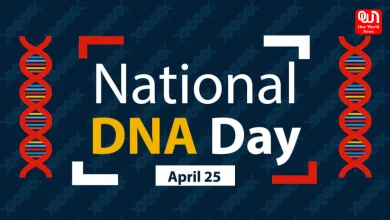From Data to Discovery: How Data Science Uncovers Hidden Insights
This insightful guide explores the transformative power of data science in revealing hidden patterns and valuable insights.
In today’s data-driven world, the ability to transform raw data into valuable insights is more crucial than ever. Data science is the way to unlocking hidden patterns, latest trends, and correlations that might otherwise go unnoticed. By leveraging advanced algorithms, statistical methods, and machine learning, data science enables businesses and researchers to move from mere data collection to meaningful discovery. This process not only enhances decision-making but also drives innovation and reveals opportunities previously hidden in the numbers.
Understanding the Fundamentals of Data science
Data science is a multidisciplinary field that gives emphasis to extract valuable insights from large volumes of data. It combines elements of statistics, computer science, and domain-specific knowledge to analyze, interpret, and predict outcomes based on data. The fundamentals of data science include data gathering, where raw data is gathered from various sources, and data cleaning, which involves preparing and transforming data for analysis. Next, data analysis techniques such as statistical modeling, machine learning, and data mining are exerted to uncover patterns and insights. Finally, data visualization is used to present these insights in a clear and understandable way.
Understanding these core principles is required for anyone looking to succeed in the field. Enrolling in a data science course can provide a comprehensive foundation in these fundamentals, providing you with the skills needed to tackle complex data challenges and make informed decisions in today’s data-driven world.
Important Concepts of Data Science
Data science encompasses several key concepts that are critical to understanding and applying the field effectively. One of the foundational concepts is data collection, which includes gathering data from various sources, such as databases, sensors, or online platforms. Data cleaning follows, where the data is processed and transformed to ensure accuracy and consistency, removing any errors or inconsistencies.
Exploratory Data Analysis (EDA) is another vital concept, where data scientists use statistical methods and visualization tools to explore and summarize the main characteristics of the data. This step helps in identifying patterns, trends, and relationships.
Machine learning is central to data science, involving algorithms that helps computers to extract information from data and predict solutions or decisions without being explicitly programmed. Data visualization is the final step, where complex data insights are presented in a visually appealing and easy-to-understand manner, often using graphs, charts, and dashboards. These concepts work together to turn raw data into actionable insights, driving informed decision-making across industries.
How does Data Science Lead from Data to Discovery?
Data science is a systematic process that transforms raw data into valuable discoveries by leveraging various techniques and methodologies. Here’s how it works:
1. Data Collection
- The journey begins with gathering data from multiple sources, such as databases, sensors, websites, or social media platforms. This raw data serves as the foundation for all subsequent analysis.
2. Data Cleaning and Preparation
- Once collected, the data often needs to be cleaned and preprocessed. This involves removing errors, handling missing values, and transforming the data into a structured format. Clean data is important for accurate analysis and reliable outcomes.
3. Exploratory Data Analysis (EDA)
- In this step, data scientists explore the data using statistical methods and visualization tools. EDA helps in understanding the underlying patterns, relationships, and trends in the data, setting the stage for deeper analysis.
4. Modeling and Analysis
- Data scientists apply machine learning algorithms, statistical models, and data mining techniques to evaluate the data. This phase is where patterns are recognized, predictions are made, and insights are uncovered.
5. Validation and Interpretation
- The results of the models are validated to ensure their accuracy and reliability. Data scientists interpret these findings, turning complex data outputs into actionable insights that can inform decision-making.
6. Visualization and Communication
- Finally, the insights are communicated through data visualization tools like charts, graphs, and dashboards. These visualizations make it more easier to understand and act upon the discovered insights.
The future potential of data science to uncover hidden insights is vast and continually expanding as technology advances. With the increasing volume of the daily generation of data, data science is poised to play an even more critical role in discovering patterns, trends, and correlations that can drive innovation across industries. From personalized medicine and smart cities to financial forecasting and climate modeling, the applications of data science are limitless. As machine learning algorithms and AI technologies become more sophisticated, data science will enable deeper, more accurate predictions and decision-making.
Investing in skills through an advanced program like the IISC data science course will be essential for those looking to harness this potential. Such a course equips professionals with cutting-edge tools and techniques, preparing them to tackle complex data challenges and unlock valuable insights that can shape the future. Data science is not just about analyzing data; it’s about transforming it into meaningful discoveries that can revolutionize the way we live and work.
Conclusion
Data science is a powerful tool that transforms raw data into valuable insights, driving innovation and informed decision-making across various fields. By leveraging techniques such as data collection, cleaning, exploratory analysis, and advanced modeling, data science uncovers the patterns and trends that would otherwise remain unseen. This journey from data to discovery not only enhances our understanding of complex issues but also leads to various new possibilities for growth and improvement. As the field keeps on evolving, data science will remain at the forefront of uncovering insights that can shape the future in meaningful ways.
We’re now on WhatsApp. Click to join.
Like this post?
Register at One World News to never miss out on videos, celeb interviews, and best reads








